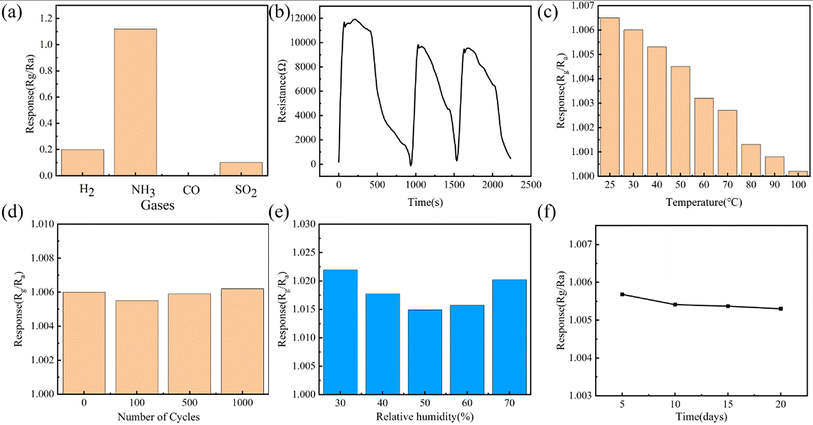 Open Access Article
Open Access ArticleCreative Commons Attribution 3.0 Unported Licence
Correction: Investigation of a flexible, room-temperature fiber-shaped NH3 sensor based on PANI–Au–SnO2
Qiuning Wang†
a,
Yuan Peng†a,
Bin Guob,
Jianhai Sun*c,
Yaxia Liu*d,
Yanjun Wange and
Hongyan Zhang*a
aBeijing Key Laboratory of Clothing Materials R&D and Assessment, Beijing Engineering Research Center of Textile Nanofiber, Beijing Institute of Fashion Technology, Beijing, 100029, P. R. China. E-mail: zhyzzh@126.com
bZhongshan Institute of Changchun University of Science and Technology, P. R. China
cState Key Laboratory of Transducer Technology, Aerospace Information Research Institute, Chinese Academy of Sciences, Beijing, 100194, P. R. China
dSchool of Fashion, Beijing Institute of Fashion, China
eBeijing Institute of Fashion Technology, School of Fashion Flat Knitting Machine Lab, China
First published on 24th January 2025
Abstract
Correction for ‘Investigation of a flexible, room-temperature fiber-shaped NH3 sensor based on PANI–Au–SnO2’ by Qiuning Wang et al., RSC Adv., 2024, 14, 38530–38538, https://doi.org/10.1039/D4RA06915C.
The authors regret that there was an error in the sentence on lines 10–11 of the left column on page 38535, in the second paragraph of section 3.4. The text originally read: ‘The responses to CO, H2S, NO2, NH3, SO2, and H2 equaled 1.04, 1.05, 1.00, 1.12, 0.10, and 0.20, respectively.’ This sentence should read: ‘The responses to H2, NH3, CO, and SO2 equaled 0.20, 1.12, 0, and 0.10, respectively.’
A higher resolution version of Fig. 7 has also been included.
The Royal Society of Chemistry apologises for these errors and any consequent inconvenience to authors and readers.
Footnote |
| † Both authors contribute equally to this work. |
| This journal is © The Royal Society of Chemistry 2025 |

